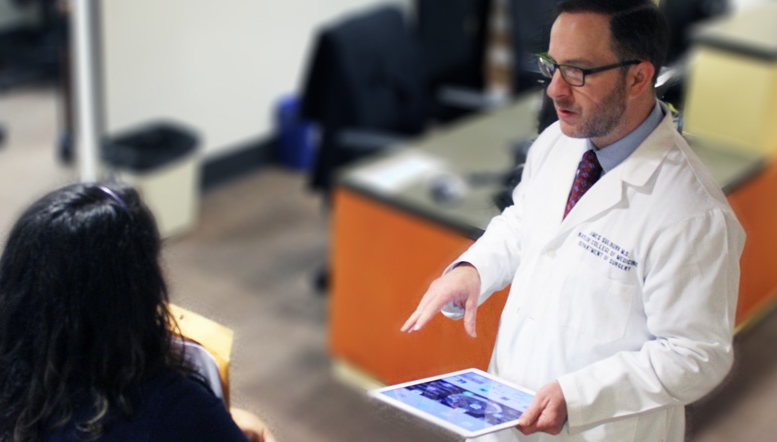Thyroid cancer awareness: Know your risk
Thyroid cancer is the eighth most common cancer in the United States – however, it is one of the most treatable. More than 98 percent of patients diagnosed with thyroid cancer survive five years or more after diagnosis.
Dr. James Suliburk, associate professor of surgery and chief of endocrine surgery at Baylor College of Medicine, explains common signs, risk factors, treatments, and innovations on the horizon for thyroid cancer.
Common risk factors
Risk factors for thyroid cancer range from genetic predisposition, to obesity to radiation exposure. “People who have a family history of thyroid cancer need to be aware they have an increased risk,” he said. “However, the main environmental risk factor is medical radiation. Those who’ve had a previous malignancy treated by radiation therapy have a higher risk of developing thyroid cancer.”
Exposure to nuclear radiation and occupational-related radiation exposure also increase risk for developing thyroid cancer.

Symptoms of thyroid cancer and next steps
Thyroid nodules, or masses, are often the first sign of cancer. Patients may notice a large bump on the neck. Suliburk says these masses should be examined as soon as possible.
“What makes thyroid cancer serious is the potential for uncontrolled growth of tumor tissue within the thyroid,” he said.
A series of functional and imaging tests are performed on the mass to determine next steps for treatment.
“We do a blood test to check the thyroid function and an ultrasound to get better imaging of the mass as well as any lymph nodes in the neck,” Suliburk said. “Based on the imaging characteristics, we may get a biopsy. If the mass is benign, then we consider how symptomatic the mass is. If it’s causing pressure, difficulty swallowing or infringement on the airway, we can do surgery to remove all or part of the thyroid in order to cure the problem.”
Surgery to remove the thyroid gland may also be required if the mass is cancerous.
“Depending on the size of the mass, we will remove half or the all thyroid and possibly any lymph nodes that could be involved with the cancer. We will tailor a treatment plan to give the patient the best cure and quality of life,” he said.
Follow-up care and future treatments
Suliburk says post-operative scarring is minimal and patients should expect a timely recovery.
“People can expect to return to work within one to two weeks after surgery. We then see patients for a post-operative check-up within one to three weeks. Patients should follow up with an endocrinologist within six weeks of surgery and then every six months, as they will provide guidance on replacing thyroid function with hormones and testing to ensure no cancer has returned.”
Suliburk says a range of minimally invasive therapies are on the horizon to treat thyroid cancer at Baylor.
“For people with masses less than a centimeter, we’re in the process of developing non-operative management where only surveillance is used,” he said. “We have scarless surgery removal techniques which allows us to perform the surgery without any incision on the neck whatsoever. Finally, we are also developing a therapy where for appropriate patients we will be able to use a needle based probe to ablate a lesion in the clinic setting without the need for invasive surgery.”
Additional Resources
To visit the Endocrine Surgery Clinic at Baylor, call 713-798-2262 or schedule an appointment online.
Learn more about thyroid cancer.
See resources for Thyroid Cancer Awareness Month.
-By Nicole Blanton



